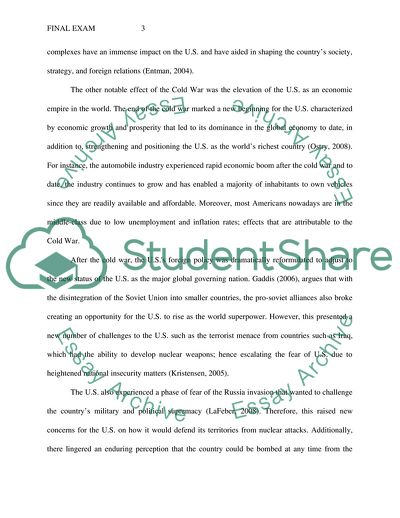Cite this document
(The Cold War Impact Essay Example | Topics and Well Written Essays - 1750 words, n.d.)
The Cold War Impact Essay Example | Topics and Well Written Essays - 1750 words. https://studentshare.org/history/1875945-his-199onl-b-final-exam-spring-2015
The Cold War Impact Essay Example | Topics and Well Written Essays - 1750 words. https://studentshare.org/history/1875945-his-199onl-b-final-exam-spring-2015
(The Cold War Impact Essay Example | Topics and Well Written Essays - 1750 Words)
The Cold War Impact Essay Example | Topics and Well Written Essays - 1750 Words. https://studentshare.org/history/1875945-his-199onl-b-final-exam-spring-2015.
The Cold War Impact Essay Example | Topics and Well Written Essays - 1750 Words. https://studentshare.org/history/1875945-his-199onl-b-final-exam-spring-2015.
“The Cold War Impact Essay Example | Topics and Well Written Essays - 1750 Words”. https://studentshare.org/history/1875945-his-199onl-b-final-exam-spring-2015.


